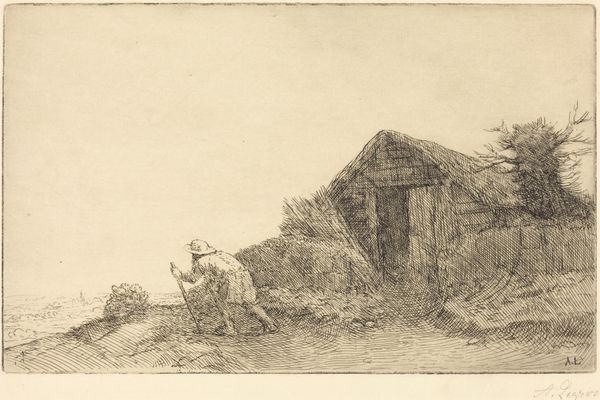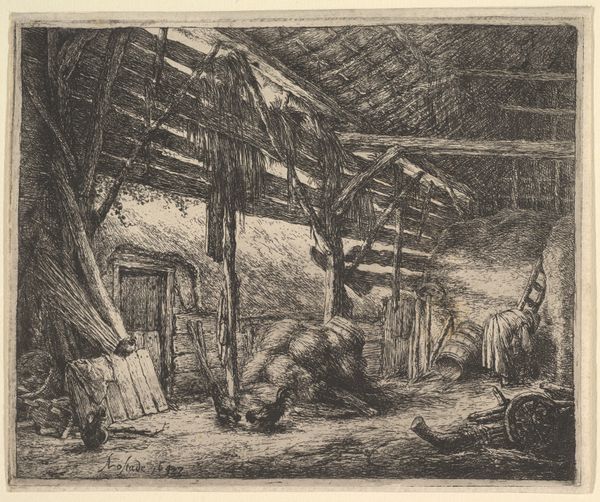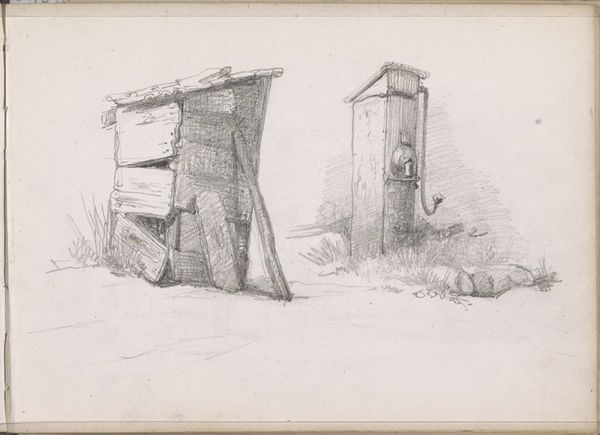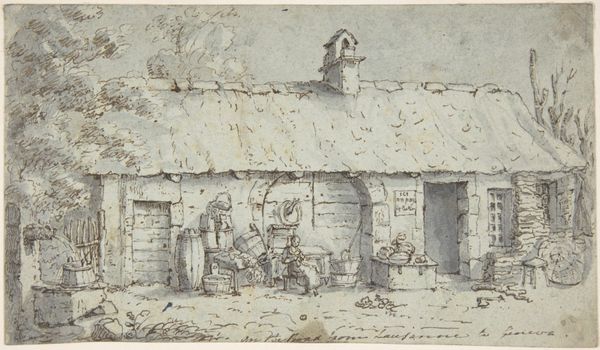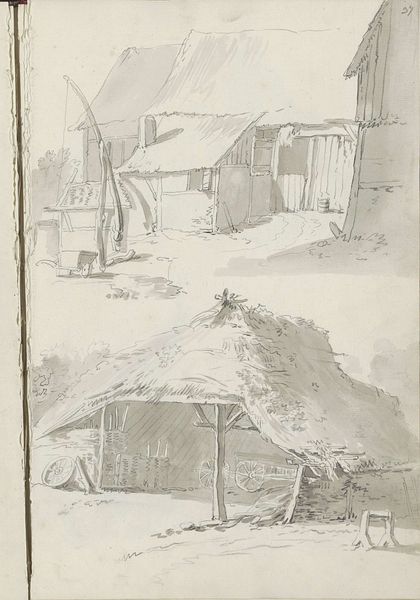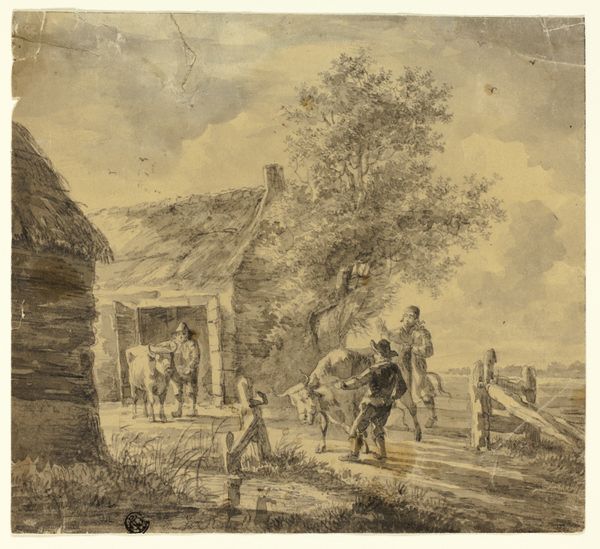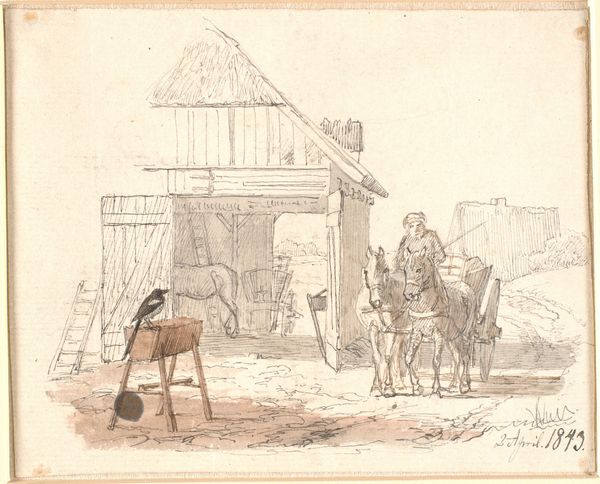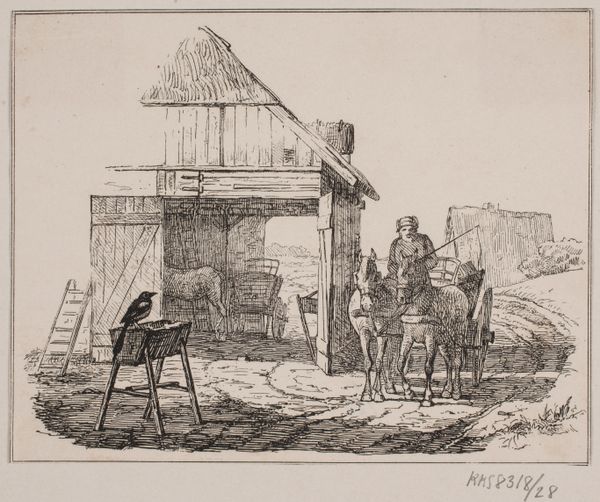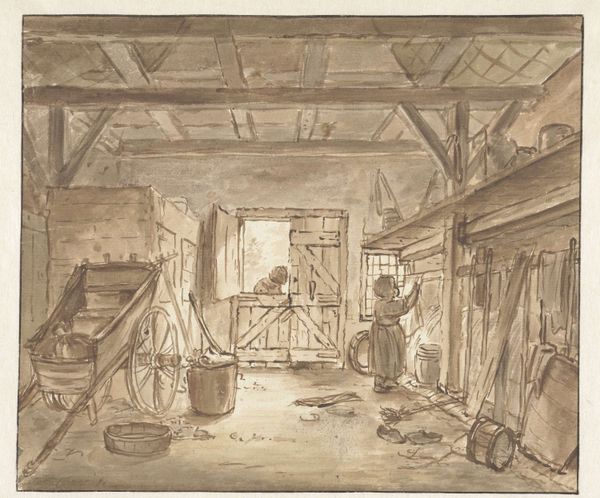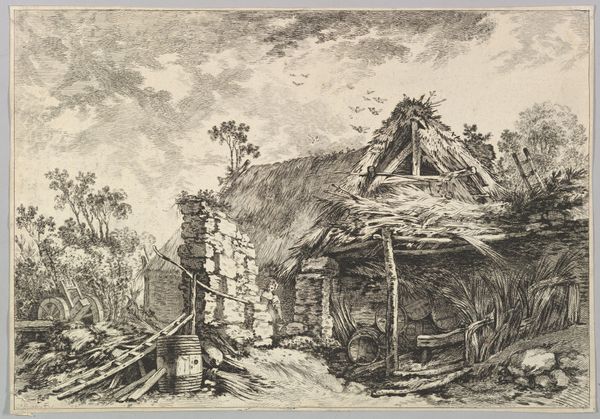
drawing, watercolor
#
drawing
#
dutch-golden-age
#
landscape
#
watercolor
#
watercolor
#
realism
Dimensions: height 240 mm, width 307 mm
Copyright: Rijks Museum: Open Domain
Curator: Hendrik Savrij produced this watercolor, "Aan de Papentorenvest te Haarlem," sometime between 1833 and 1907. It now resides here at the Rijksmuseum. Editor: It feels somber, almost austere, doesn't it? The limited palette of greys and browns contributes to that impression, a scene captured in the early morning mist or late evening shadows, the scene seems deserted by time. Curator: It certainly speaks to the realities of labor and resources. The piece exemplifies the artist's command of the watercolor medium, rendering textures of aged wood, worn brick, and even the dampened earth, through these materials you sense that these things have existed through years of usage and time passing. Editor: I'm struck by how the architectural details contrast with the person drawing water in the lower right, presumably a local. This scene illustrates not only a physical landscape, but also reflects societal structures, class, and access to resources within 19th-century Haarlem. Who has access to clean water versus dirty water? How is work organized? Curator: Precisely. Savrij’s technique involves layering washes to build up tonal depth and carefully controlled line work. He focuses intensely on structure; consider the intricate depiction of the windmill in the distance, it emphasizes an important industry from this town while portraying it’s working landscape, and shows an old age where windmills still had large economic impacts. Editor: The presence of that figure working reminds us this landscape isn't just aesthetic; it’s a space of work, likely shaped by that labor. How did gender, race, and class impact one's access to leisure and determine participation in laborious tasks represented by that man pumping water? These drawings document those historical power imbalances as lived and experienced daily. Curator: This is one drawing but a valuable primary source. I admire Savrij’s approach to depicting common, ordinary scenes from the reality of Dutch life, with consideration on its environmental factors as well. Editor: For me, looking at "Aan de Papentorenvest te Haarlem," goes beyond art appreciation; it sparks necessary critical dialogue regarding identity, politics, labor and the intersectional inequities prevalent even in quotidian landscapes.
Comments
No comments
Be the first to comment and join the conversation on the ultimate creative platform.
